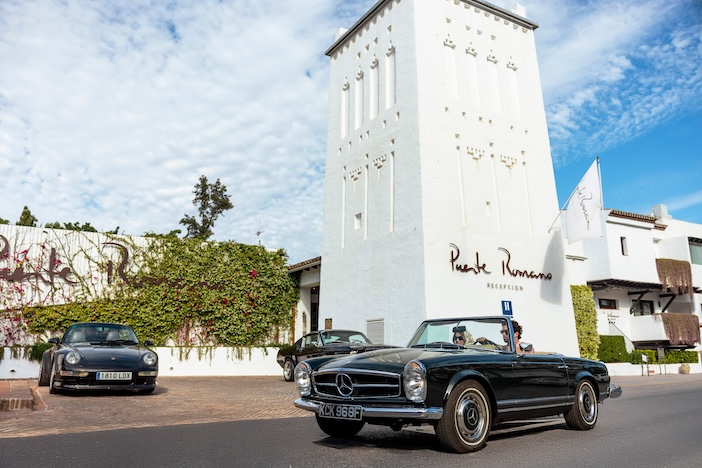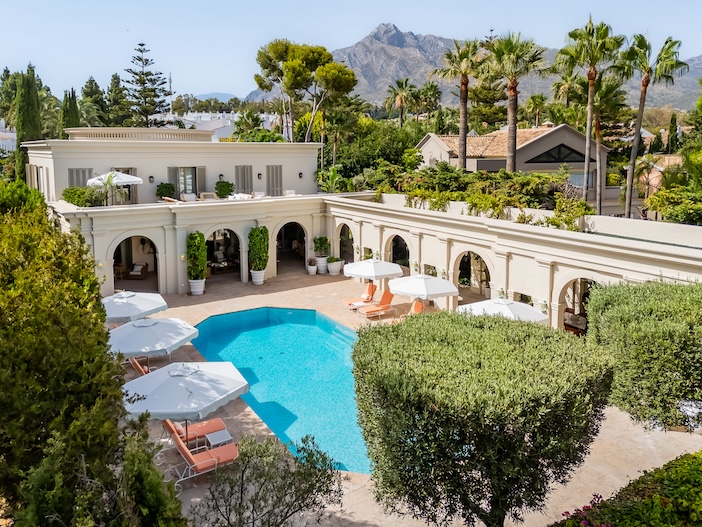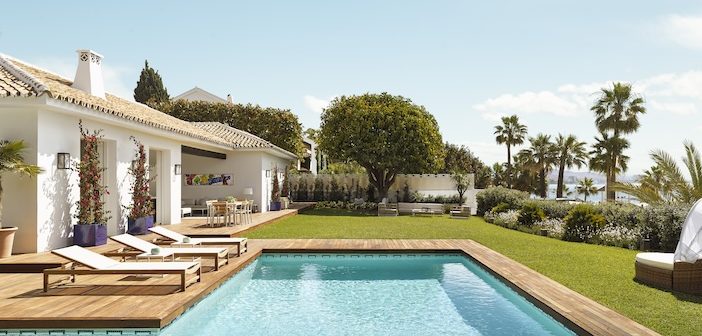Katie Monk checks into Puente Romano Beach Resort, discovering beachside feasts, serene suites and the enduring glamour that shaped this iconic stretch of Andalusian coast…
When Prince Alfonso von Hohenlohe stopped for a picnic in the small fishing village of Marbella in 1947, little did he know he was about to ignite a phenomenon. Sent by his father, Max, to scout out a place for a new family business, he saw the potential immediately. A bucolic setting of dark sandy beaches, palm-dappled houses and striking Sierra Blanca mountain backdrop wooed him, and he bought a
phylloxera-blighted vineyard between Marbella and Puerto Banús for 150,000 pesetas. A few years later he set about building a hotel – now the famous Marbella Club – then invited every A-list celebrity he knew to come and stay. It was an instant hit. Earning the nickname Mr Ole Ole, the Prince was frequently seen dancing until dawn. The story of Marbella’s Golden Mile had begun.

The Marbella Club still stands today, and is one of the most notable five-star resorts on the Costa del Sol – but just 500 metres away lies the Prince’s second project: The Puente Romano Resort. A recreation of a whitewashed Andalucian ‘pueblo blanco’ village, complete with verdant gardens and fountains, it was first developed in 1974 as an apartment complex, but turned into a luxury hotel and resort in 1979. That same year, it opened its famous tennis club. The manager was Bjorn Borg. Today it’s still one of the best professional tennis clubs in all of Europe.
Named after the first-century Roman Bridge that still stands in its grounds and once linked Cadiz to Rome, the resort is now a member of Leading Hotels of the World. It’s kept that Andalucian village feel, with suites and private villas dotted around the gardens, water features, and a plaza with more than 20 restaurants and bars. 2,000 staff man the fort – 200 tend the gardens alone.

For me, the draw wasn’t the tennis pedigree (I’m no tennis pro), but what I’m really good at is beach clubs. So a visit to the beach-side Chiringuito on arrival was a must for my travel-weary bones. If you’re not familiar with the chiringuito concept, you’re in for a treat. These rustic beach barbecues serve grilled fish and seafood at open-air tables, often shaded by palapa-thatched umbrellas. You can usually smell them a mile off, thanks to the plumes of char-grilled smokey goodness wafting through the salty air. I particularly love the ones where the barbecuing is done in an upturned boat.
At Puente Romano, the Chiringuito is naturally a more upmarket affair, but it was still traditional, and we tucked into paella, espetos (sardines on skewers) calamari and glasses of chilled verdejo at a long table facing the sea, accompanied by the crashing waves and seagulls. So far, so Marbella – sun-soaked, seafood-laden, and wonderfully unhurried. Exactly the kind of scene Prince Alfonso would have envisioned when he first fell for this coastline.

Just behind the Chiringuito is the famous Sea Grill, which is the place to head in the evenings. I didn’t have the pleasure of seeing it after dark, but the morning buffet breakfast was surely one of the largest and best I’ve had in a long while. There was everything you could need or want, and more. A variety of salads, Spanish hams and cheeses, fresh juices galore, and eggs made to order. Staff were slick and on point – my cafe con leche arrived within minutes of my sitting down (not a given). Nothing was too much trouble, and seeing how many guests were also dining at the same time (my feeling is that this place is never quiet), it’s testament to their professionalism.
Thankfully my suite was nearby, so I never had far to walk to the beach or to breakfast. I loved the traditional design with its contemporary flourishes – it struck just the right balance. Terracotta tiles and whitewashed walls were offset by snazzy cushions and a funky headboard. I also appreciated the yoga mat and kitchenette in my room, as well as the outdoor terrace with enough foliage to give me privacy from the main footpath to the beach.

Beyond the beach, the resort’s Plaza offers serious dining credentials – outposts of Cipriani, Nobu (with Nobu’s first female Executive Chef, Eleni Manouso at the helm), Peruvian COYA and Mediterranean GAIA among them. This is where the Marbella set comes to see and be seen after dark, and it’s top of my list for my next visit. And with Andalucia’s mild winters making it one of the best places to escape to in December and January (I particularly love the Christmas lights in Malaga Centro), that return trip will hopefully be sooner rather than later. Hasta pronto.
For more information about Puente Romano Beach Resort, including details of offers, things to do and information about real estate, please visit www.puenteromano.com.




